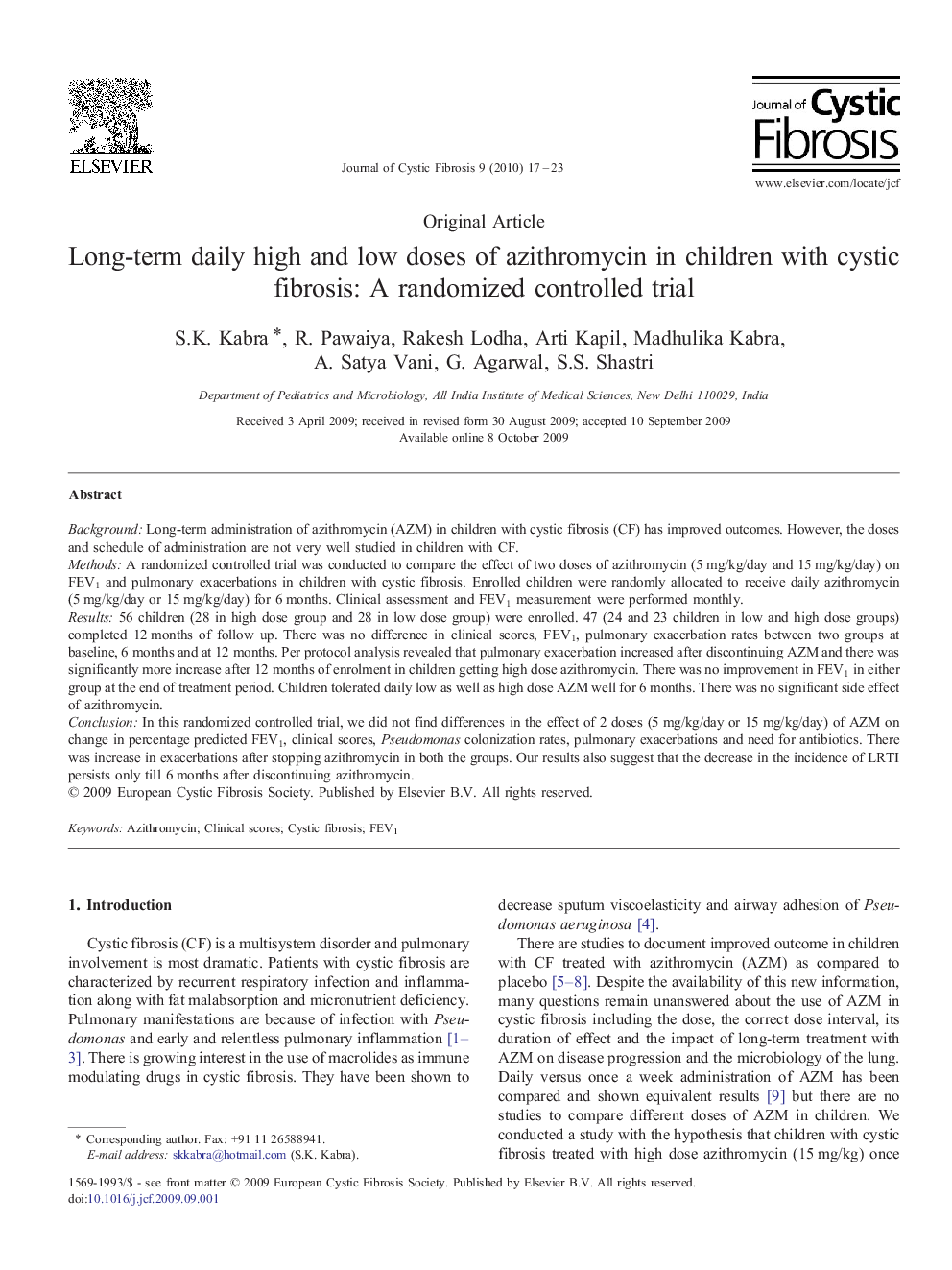| Article ID | Journal | Published Year | Pages | File Type |
|---|---|---|---|---|
| 4209272 | Journal of Cystic Fibrosis | 2010 | 7 Pages |
BackgroundLong-term administration of azithromycin (AZM) in children with cystic fibrosis (CF) has improved outcomes. However, the doses and schedule of administration are not very well studied in children with CF.MethodsA randomized controlled trial was conducted to compare the effect of two doses of azithromycin (5 mg/kg/day and 15 mg/kg/day) on FEV1 and pulmonary exacerbations in children with cystic fibrosis. Enrolled children were randomly allocated to receive daily azithromycin (5 mg/kg/day or 15 mg/kg/day) for 6 months. Clinical assessment and FEV1 measurement were performed monthly.Results56 children (28 in high dose group and 28 in low dose group) were enrolled. 47 (24 and 23 children in low and high dose groups) completed 12 months of follow up. There was no difference in clinical scores, FEV1, pulmonary exacerbation rates between two groups at baseline, 6 months and at 12 months. Per protocol analysis revealed that pulmonary exacerbation increased after discontinuing AZM and there was significantly more increase after 12 months of enrolment in children getting high dose azithromycin. There was no improvement in FEV1 in either group at the end of treatment period. Children tolerated daily low as well as high dose AZM well for 6 months. There was no significant side effect of azithromycin.ConclusionIn this randomized controlled trial, we did not find differences in the effect of 2 doses (5 mg/kg/day or 15 mg/kg/day) of AZM on change in percentage predicted FEV1, clinical scores, Pseudomonas colonization rates, pulmonary exacerbations and need for antibiotics. There was increase in exacerbations after stopping azithromycin in both the groups. Our results also suggest that the decrease in the incidence of LRTI persists only till 6 months after discontinuing azithromycin.
